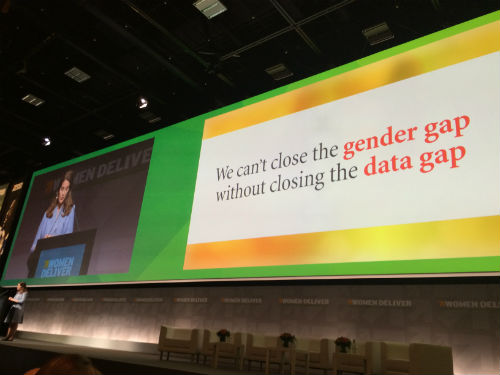At the Women Deliver conference in Copenhagen this month, Melinda Gates announced the Gates Foundation’s commitment of $80 million to close the gender gaps and improve equality of women and girls globally. The news comes at a good time for those in development circles. Bottom line: less than 2 cents of every development dollar goes to girls, according to Impact, the magazine of nonprofit organization, PSI. But to tell stories of gender inequality, you’ll need good data. Here’s what business reporters must know about gender data to effectively report on development news and business news on women.
Define gender data
Definitions of gender data vary, but the official UN definition of gender statistics are those adequately reflecting differences and inequalities among men and women. Sometimes these records don’t exist. Data2X is a group joining with the Gates Foundation to help the UN gather better gender data. Experts say a lack of data on women including their birth records, their deaths, health records, and business and land ownership holds back the United Nations and NGOs on achieving the Sustainable Development Goals for 2030.
Inadequate divorce and marriage registrations is another data issue that affects women more than men, Data2X senior director Emily Courey Pryor told the Huffington Post. In such cases, women can’t inherit property, take out loans, or register their children. Through more reliable data, women and girls’ lives can become visible and counted, helping to inform programming and hold leaders to account.
Also, data is different between men and women because our bodies are different and we do different things, said Claire Rogers, an expert on international sexual and reproductive health and rights based in Nepal. She notes that women’s bodies create different health outcomes to men (i.e. children, menstruation and different cancers). Women tend to do unpaid work such as caring for elders, children and the disabled. Also, land remains largely male dominated in most countries. And, important healthcare issues, like maternal mortality and death due to unsafe abortion, are often under reported in many developing countries due to hospitals and healthcare workers not reporting women’s deaths at all.
Ensure you and your readers know why gender data matters
As you craft your business features, ensure your readers know what is at stake, and why gender data is important. UN Women notes data holds power and demonstrates the size and nature of social or economic problems, and clarifies who is falling through the cracks. Most of all, without current information on girls and women, efforts to advance gender equality via the United Nations Sustainable Development Goals could fail.
Question the source and accuracy of your data
Ministry of Health, the UN and World Bank are all reliable and solid sources of data; still, business reporters must ask how the data was collected and by whom and note its limitations. In all of Rogers’ research on women’s and girls’ sexual and reproductive health, she uses Ministry of Health demographic surveys. But she notes that researchers may have missed certain segments within their data collection due to lack of physical access, social and cultural barriers, resistance to sharing information, and sheer inaccuracies in recording and reporting. “Take the ministry data, but explain to your readers that shortcomings may exist.”
Put a human face to gender data
Our job as business reporters is to take the reader to the data, then back to the people the data impacts. Sophie Cousins, a health reporter based in Nepal, wrote for the Guardian that 9 percent of maternal deaths in India result from complications of unsafe abortions. Cousins cited data from the Guttmacher Institute Review and mentioned efforts from nonprofits to make abortions safer. However, it was her lead, describing a 22-year-old woman names Kiran clutching her abdomen after an abortion that helps us visualize the women these numbers impact.
Less is more
For your reader to stay focused and engaged, strive for 2 to 3 bullets of excellent and compelling data per article and hyperlink to the actual study (not the report on the study) so your reader can always dig deeper. For instance, Water.org finds about half of all girls worldwide attend schools without toilets and that this lack of privacy causes many girls to stop school at puberty, trapping women in a poverty cycle where they can’t earn an income. Keep the data short. Anything more and you’ll risk losing your audience, also, you can reserve any additional interesting and additional data for a follow up on your topics.
Use the most current data
Your job when reporting on women-related data is also to seek the most current numbers you can find. Sometimes this may mean contacting the media director of the institute whose numbers you cite and asking if more current figures exist. Ask experts outside of large NGOs and nonprofits to estimate more current figures. When out in the field, ask business experts tied into your trend for their estimates.











